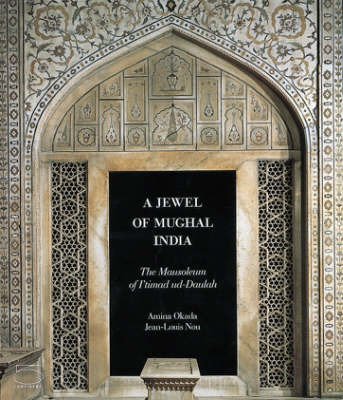Ex Oriente Lux
1 total work
At Agra (India) rises a white marble mausoleum whose walls are studded with encrustations of semi-precious stones and decorated with exquisite and refined paintwork. Though less renowned than the celebrated Taj Mahal (1632-43), the mausoleum of I'timad ud-Daulah is nevertheless one of the undisputed gems of seventeenth-century Mughal art. The mausoleum was erected at the end of emperor Jahangir's reign (1605-27) and completed in 1628. Jahangir's wife, Nur Jahan, built it to shelter the mortal remains of her father, Mirza Ghiyas Beg, and of her mother. Originally from Persia, Mirza Ghiyas Beg was appointed to the service of emperor Akbar. With the accession to the throne of Jahangir and through the marriage of the emperor to his daughter, Nur Jahan, Mirza Ghiyas Beg's power and influence kept growing. Besides being appointed chief Minister, Mirza Ghiyas Beg was also honored with the prestigious title of I'timad ud-Daulah, "the Pillar of the State". As a precursor of the Taj Mahal the mausoleum of I'timad ud-Daulah shows a certain number of architectural or decorative biases which were to enjoy great favor under the reign of the Mughals.
Among them are the white marble facing covering the total surface of the structure, the corner turrets that turn into minarets, the profusion of the encrustations displaying striking polychrome inlays on the opalescent whiteness of the walls, and the predilection for bouquets and floral motifs fraught with paradisiac symbolism. Built in the midst of a large symmetrical garden planned according to the Persian model of the quadripartite garden, the mausoleum projects toward the sky its four corner towers topped by small kiosks. The external walls are decorated with delicate encrustations of polychrome stones of different size and nature--onyx, jasper, topaz, agate or carnelian--featuring boughs, vine branches, flowers, cypress trees, vases and jugs, or reproducing endless geometrical patterns, herringbone motifs, or hexagonal stars. Even more spectacular the mausoleum's internal ornamentation combines paintwork and stone inlays. Walls, ceilings and niches are decorated with mural paintings and with painted or carved stucco reliefs in a combination of vivid colours in which ochres, reds and greens predominate.
Painted motifs reproduce trees of different species, vases filled with flowers and leaves, vine branches and bunches of grapes, but also bowls overflowing with fruit and trays filled with pomegranates -- motifs representing as many symbols, metaphors and visual counterpoints to the Koranic descriptions recalling the delights of the Garden of Eden.
Among them are the white marble facing covering the total surface of the structure, the corner turrets that turn into minarets, the profusion of the encrustations displaying striking polychrome inlays on the opalescent whiteness of the walls, and the predilection for bouquets and floral motifs fraught with paradisiac symbolism. Built in the midst of a large symmetrical garden planned according to the Persian model of the quadripartite garden, the mausoleum projects toward the sky its four corner towers topped by small kiosks. The external walls are decorated with delicate encrustations of polychrome stones of different size and nature--onyx, jasper, topaz, agate or carnelian--featuring boughs, vine branches, flowers, cypress trees, vases and jugs, or reproducing endless geometrical patterns, herringbone motifs, or hexagonal stars. Even more spectacular the mausoleum's internal ornamentation combines paintwork and stone inlays. Walls, ceilings and niches are decorated with mural paintings and with painted or carved stucco reliefs in a combination of vivid colours in which ochres, reds and greens predominate.
Painted motifs reproduce trees of different species, vases filled with flowers and leaves, vine branches and bunches of grapes, but also bowls overflowing with fruit and trays filled with pomegranates -- motifs representing as many symbols, metaphors and visual counterpoints to the Koranic descriptions recalling the delights of the Garden of Eden.
